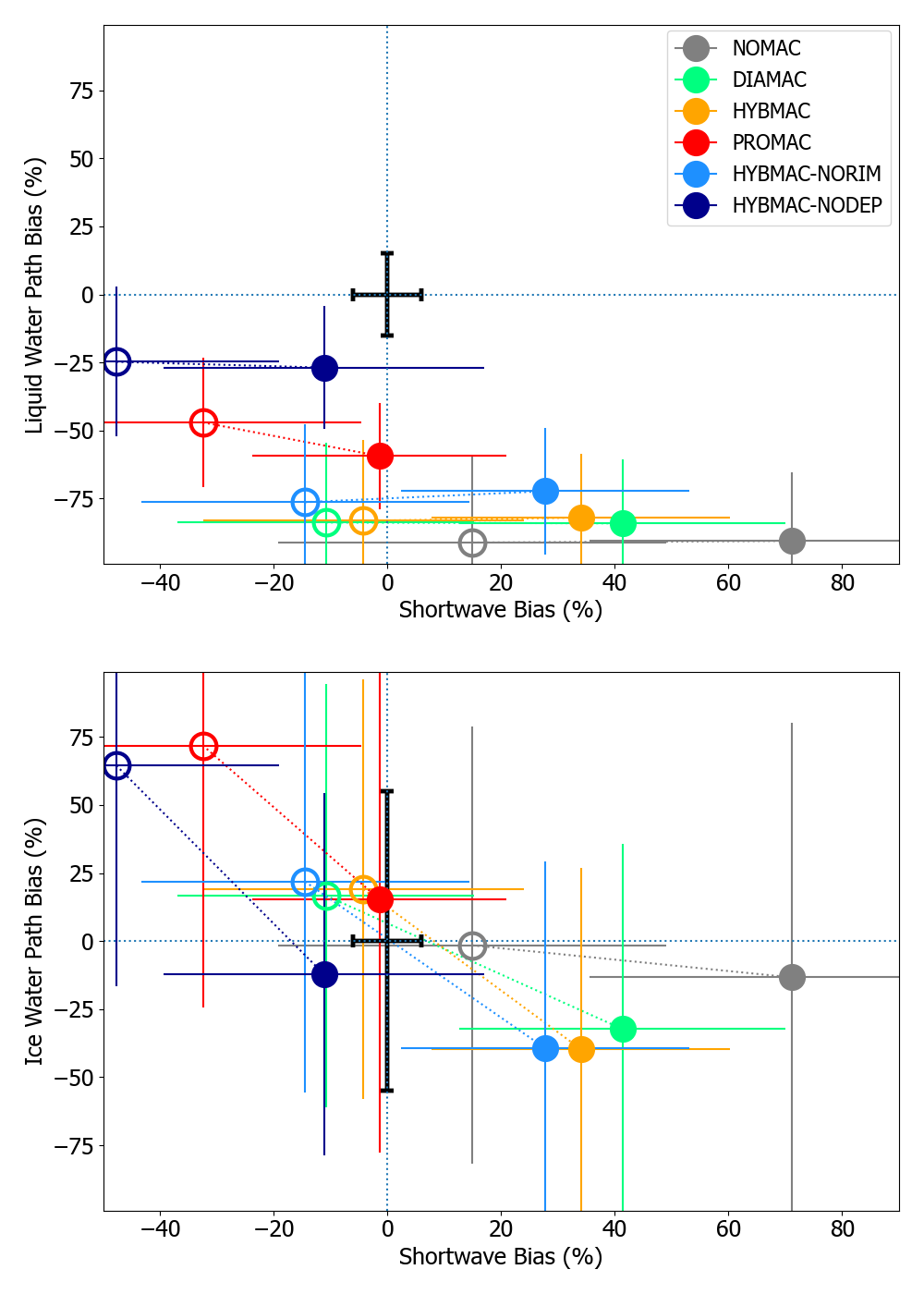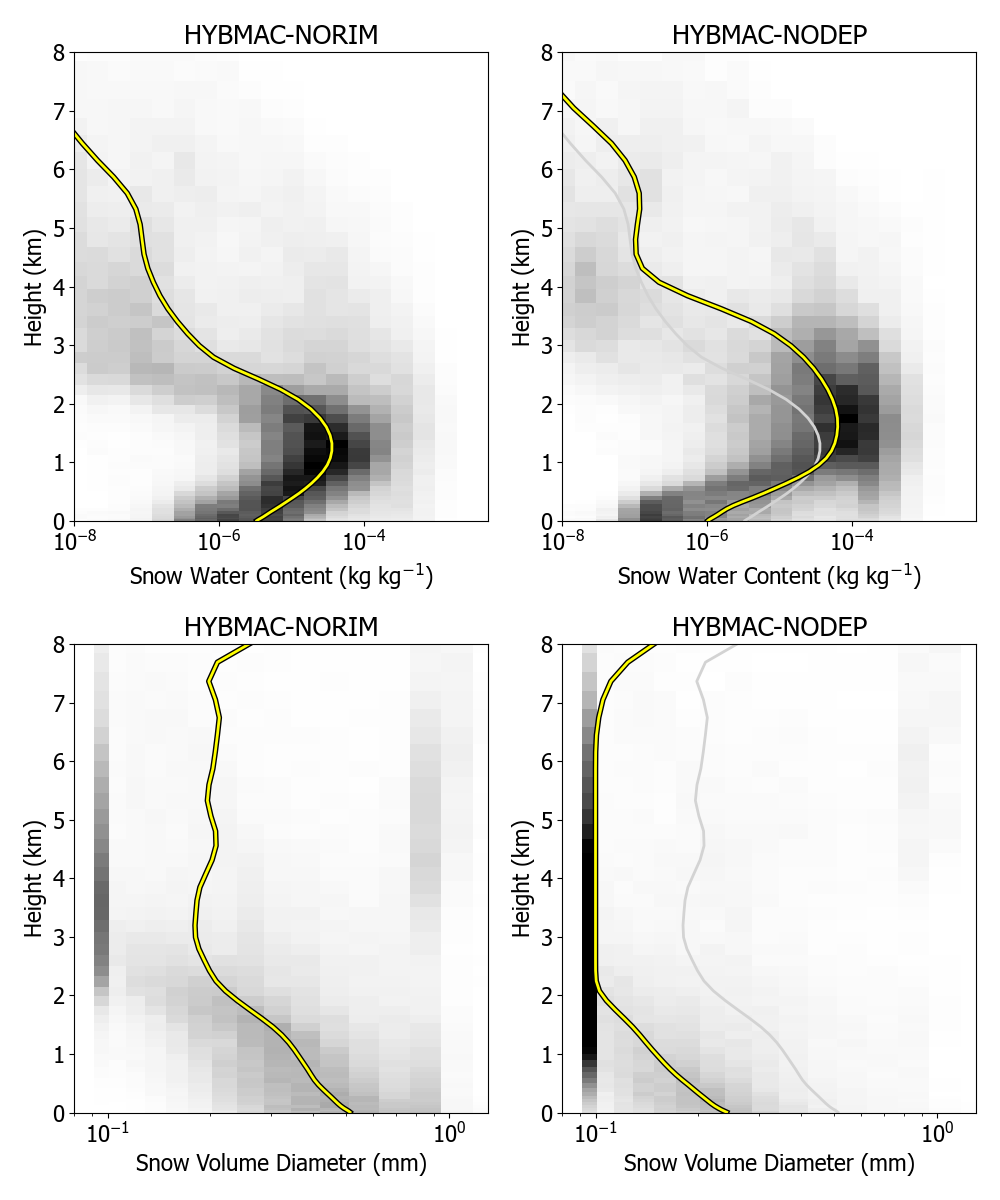Macrophysics and microphysics in km-scale simulations of mixed-phase polar clouds
Submitter:
Van Weverberg, Kwinten — Ghent University
Area of research:
Cloud Processes
Journal Reference:
Science
Mixed-phase clouds in polar regions remain challenging for numerical models of the atmosphere, regardless of their application in short-range weather prediction or long-term climate studies. Significant quantities of super-cooled liquid are typically observed in these clouds, while models tend to glaciate clouds swiftly at temperatures below the freezing point. This study compares kilometer-scale regional model simulations with observations of a large number of cold air outbreaks (CAOs) during the Cold Air Outbreaks in the Marine Boundary Layer Experiment (COMBLE, Geerts et al. 2022), conducted in Norway in 2020. We present sensitivity simulations to the sub-grid representation of cloud macro- and microphysics aimed at a better understanding of mixed-phase cloud liquid water biases in numerical models.
Impact
Our study confirms a persistent lack of super-cooled liquid water in simulated mixed-phase clouds over polar regions, both during convectively active and stratiform CAOs. We show that more advanced parameterizations do not necessarily result in improved simulations of CAO clouds. Using the COMBLE observations, we also provide evidence that precipitation particles are likely too large in the regional model we used and that this might play a role in the excessive glaciation of clouds.
Summary
We investigate why kilometer-scale numerical models of the atmosphere struggle to maintain super-cooled liquid water in mixed-phase clouds during CAOs. Sensitivity simulations are performed for a large number of CAO events during the COMBLE field campaign. We show that an accurate representation of cloud macrophysics is important to capture the radiative properties of these clouds. However, most configurations suffer from error compensation of excessive total water content, but a lack of super-cooled liquid. More advanced (i.e., prognostic cloud fraction) macrophysics parameterizations produce more liquid water, but more advanced (i.e., double moment) microphysics parameterizations deplete liquid water even faster than simple schemes in our simulations. A further investigation into the origin of the excessive super-cooled liquid depletion in the most advanced microphysics parameterization identifies larger-than-observed precipitation particle sizes and the formulation of snow depositional growth as possible culprits. Sensitivity tests with reduced depositional growth rates yield improved liquid water contents and smaller precipitation particle sizes than the default configurations. Further research should focus on whether other mechanisms that result in smaller precipitation particles (e.g., ice multiplication) lead to similar improvements in liquid water contents.



